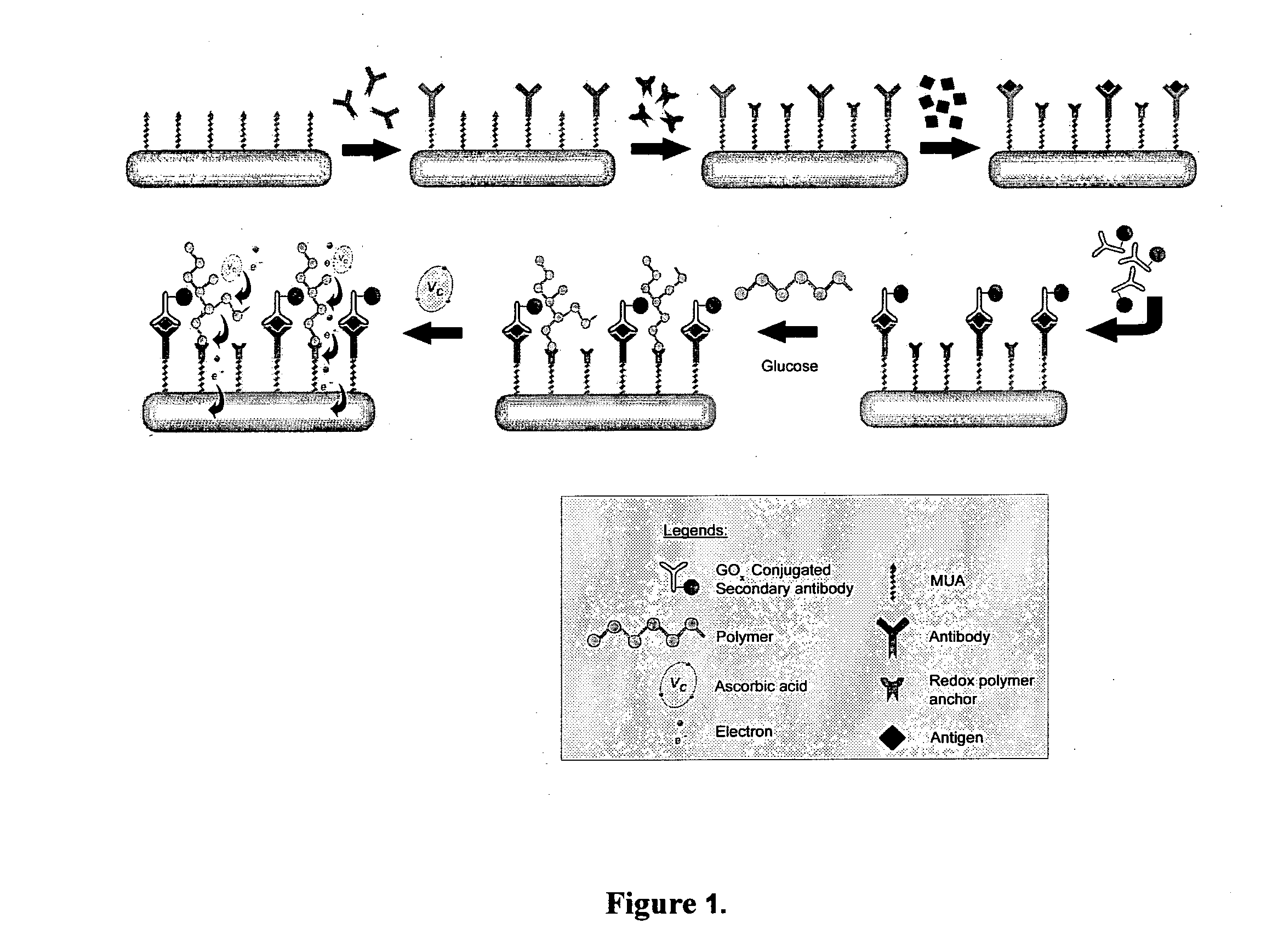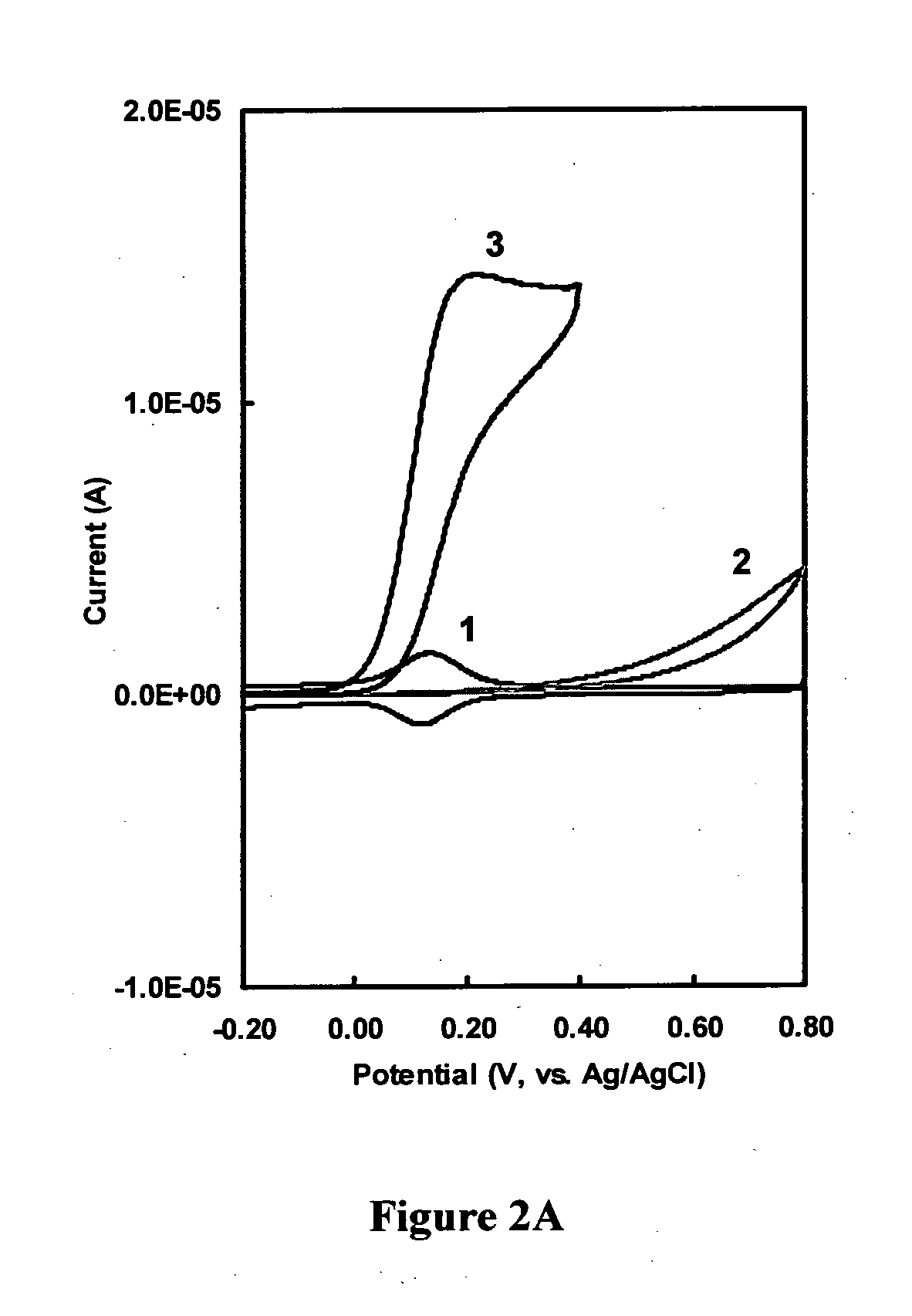Immunoassay
a technology of immunoassay and detection limits, applied in the field of immunoassay, can solve the problems of lack of a proteome-wide bioamplification strategy and detection limits usually at ng/ml levels
- Summary
- Abstract
- Description
- Claims
- Application Information
AI Technical Summary
Benefits of technology
Problems solved by technology
Method used
Image
Examples
examples
[0137]Materials and Reagents. Unless otherwise stated, chemicals were obtained from Sigma-Aldrich (St Louis, Mo.) and used without further purification. The redox polymer used in this study was poly(4-vinylimidazole-co-acrylamide) partially imidazole-complexed with [Os(dmpy)2Cl]2+ (PVIA-Os). Synthesis of the redox polymer was described elsewhere. The oxidized form of PVIA-Os was used in the protein detection. To demonstrate the “proof of principle”, CEA was selected as the model protein since rabbit polyclonal antibody and monoclonal antibodies to this cancer biomarker are commercially available. CEA (CD66e, molecular weight about 180 KDa) and its monoclonal antibody (mAb, clone C6G9) were purchased from Sigma. The biotinylation of mAb was performed using a known method. Briefly, the mAb solution was dialyzed overnight at 4° C. against 0.10 M sodium bicarbonate buffer, pH 8.3. 200 μl of biotin-N-hydroxysuccinimide ester (2.0 mg / ml) dissolved in dimethyl sulfoxide was added to 1.0 ml...
PUM
| Property | Measurement | Unit |
|---|---|---|
| constant voltage | aaaaa | aaaaa |
| voltage | aaaaa | aaaaa |
| concentrations | aaaaa | aaaaa |
Abstract
Description
Claims
Application Information
 Login to View More
Login to View More - R&D
- Intellectual Property
- Life Sciences
- Materials
- Tech Scout
- Unparalleled Data Quality
- Higher Quality Content
- 60% Fewer Hallucinations
Browse by: Latest US Patents, China's latest patents, Technical Efficacy Thesaurus, Application Domain, Technology Topic, Popular Technical Reports.
© 2025 PatSnap. All rights reserved.Legal|Privacy policy|Modern Slavery Act Transparency Statement|Sitemap|About US| Contact US: help@patsnap.com



